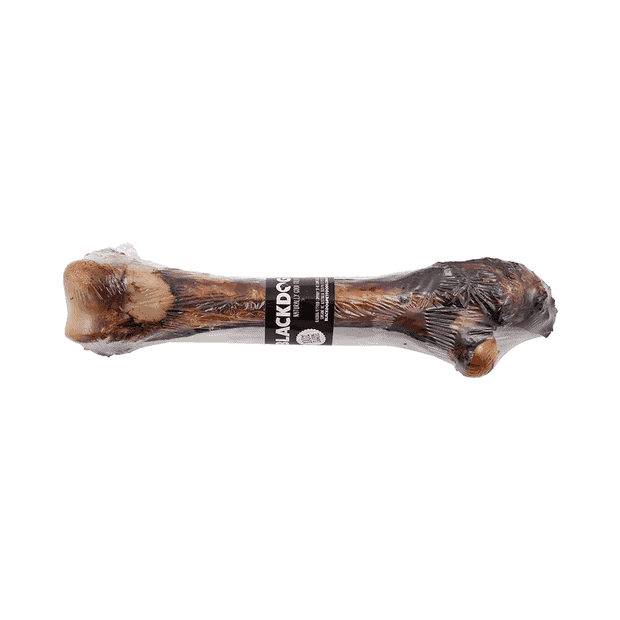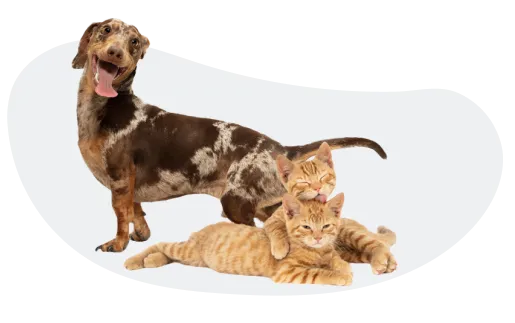Broken dog teeth are one of the most common problems we see – specifically slab fractures of the upper carnassials. The carnassials are big teeth on the side of the mouth that dogs chew with.
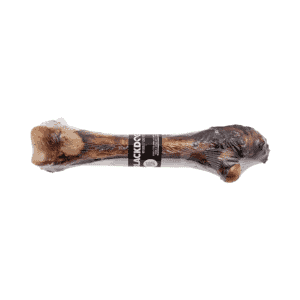
Dogs chew in a scissor-like action and if the tooth is strong, the object being chewed will break in the action of the scissors. If the tooth is weak or your pet is unlucky, the tooth will break instead.
When the tooth breaks, the whole side of the tooth snaps off. This results in pain and infection. If the fracture is deep enough it can only be resolved by root canal treatment or extraction, both pretty big procedures!
The bottom tooth that is the other half of the scissors will usually suffer from accelerated plaque and tartar buildup.
Chewing bones is the most common cause of this injury – some are simply too hard to be considered safe. Recently the United States Food & Drug Administration (FDA) released a consumer update confirming what veterinary dentists have known for a long time that chewing bones is not a safe option for our pet pooches (click here to view the release).
Culture & Myths About Bones
Bones are firmly ingrained in the Australian culture. Dogs love to chew them – it gives them great pleasure, and seems at least on the surface to help keep their teeth clean. Even my own children are adamant that dogs eat bones, thanks to various nursery rhymes and Wiggles songs. It’s hard to argue with a toddler when it comes to Wags the Dog!
Let’s start by dispelling some of the myths about bones. Many people have fed bones to their dogs for years with no apparent signs of damage. We see many others pets that aren’t so lucky. Some dogs play rougher than others, and some chew harder than others. If your dog chews like it is trying to kill a wild beast, watch for the damage. And don’t forget, we see many dogs with fractured teeth that have been undetected for years this doesn’t mean they aren’t hurting, just that they just don’t want to let us know about it!
Dogs in the wild chew bones, don’t they? Surely something so natural is safe?
Wild dogs usually chew the meat off the bone and leave the bones behind. Wild dogs get broken teeth and periodontal disease too!
So natural isn’t always best and there are many safer dental chew products available that are softer yet effective.
How do I tell if my dog has a broken tooth?
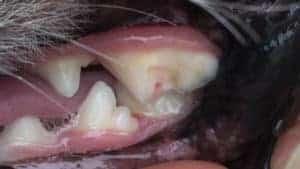 Dogs aren’t good at telling us they are in pain, in fact, they will try to not show any weaknesses to their pack (that’s us!) until it becomes too sore to hide it any longer. Many of us have had an infected tooth and know how painful it is well it hurts your dog just as much, even if they don’t whinge about it! This means they will suffer in silence for years if we don’t keep an eye out for problems. Things you might notice include:
Dogs aren’t good at telling us they are in pain, in fact, they will try to not show any weaknesses to their pack (that’s us!) until it becomes too sore to hide it any longer. Many of us have had an infected tooth and know how painful it is well it hurts your dog just as much, even if they don’t whinge about it! This means they will suffer in silence for years if we don’t keep an eye out for problems. Things you might notice include:
- You might see that a tooth looks a different shape or colour to the one on the other side.
- You might notice that a tooth on one side has more
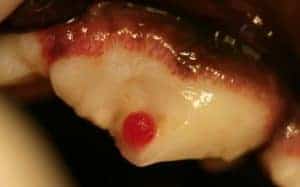 tartar buildup compared with the other side this often indicates a damaged tooth surface or that the dog is not chewing properly on one side due to pain.
tartar buildup compared with the other side this often indicates a damaged tooth surface or that the dog is not chewing properly on one side due to pain. - You might see swelling around the tooth or a lump under the eye (in this case a tooth root abscess is highly likely).
Or you might not see anything at all! If you are unsure, get your vet to do a dental check.
What if you really want to give bones to your dog?
You need to weigh up the risks and benefits of bones. IF you wish to feed bones, you can decrease the risk of problems to dog teeth by only using raw bones (less likely to splinter), match the size of the bone to the size of the dog (less likely to get caught or cause an obstruction), leave the meat on (so there is something to chew), supervise your dog, and take the bone away once the meat is gone. A Better still, look into safer chewing alternatives, such as specially formulated dental diets, dental chews and toys. Your dog will thank you for it.
